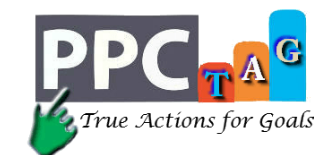Fuel Your Business Growth: How Google Ads Can Drive Leads and Sales for Car Dealerships
In the highly competitive automotive industry, car dealerships need effective marketing strategies to reach potential customers and drive sales. Google Ads provides a powerful platform to connect with individuals actively searching for cars, making it an ideal tool for car dealerships to maximize their online presence. This comprehensive guide will explore the world of Google Ads for car dealerships, providing valuable insights and strategies to help dealerships leverage this platform to boost their visibility, attract qualified leads, and increase sales.
- Understanding Google Ads:
Google Ads is an online advertising platform developed by Google, allowing businesses to display their ads on Google’s search engine results pages (SERPs) and partner websites. It operates on a pay-per-click (PPC) model, where advertisers only pay when someone clicks on their ads. For car dealerships, Google Ads offers a highly effective way to reach potential customers actively searching for cars or related keywords.
- Setting Up Google Ads for Car Dealerships:
a. Keyword Research: Successful Google Ads campaigns for car dealerships start with thorough keyword research. Dealerships must identify relevant keywords that potential car buyers might use when searching for cars. Tools like Google Keyword Planner and SEMrush can assist in finding the right keywords to target.
b. Campaign Structure: Organizing Google Ads campaigns into ad groups that focus on specific car models, brands, or target audiences allows for better ad targeting, ad copy customization, and performance tracking. This structure ensures that ads are highly relevant and tailored to the specific needs and interests of potential car buyers.
c. Compelling Ad Copy: Crafting compelling ad copy is crucial to capturing the attention of potential car buyers and driving clicks. Car dealerships should highlight unique selling propositions, such as competitive pricing, special offers, financing options, or a wide selection of vehicles. Including a strong call-to-action in the ad copy can also encourage potential buyers to take the next step.
d. Landing Page Optimization: Optimizing landing pages to align with the ad copy and provide a seamless user experience is essential for maximizing conversions. Car dealerships should ensure that their landing pages showcase relevant vehicles, provide detailed information, offer easy contact options, and facilitate test drives or appointments.
- Targeting Options:
a. Geolocation: Car dealerships can target their Google Ads to specific geographical locations, ensuring they reach potential customers within their desired markets. This targeting option is particularly useful for local or regional dealerships.
b. Language Targeting: Language targeting allows car dealerships to display their ads to users who speak a particular language. This feature is helpful for targeting specific language-speaking communities or reaching international customers.
c. Demographics and Interests: Refining targeting by selecting specific demographics and interests helps car dealerships reach the most relevant audience. By focusing on the characteristics and preferences of their ideal customers, dealerships can optimize their ad performance and increase the likelihood of generating qualified leads.
- Maximizing Ad Performance:
a. Ad Extensions: Google Ads offers various ad extensions that can enhance the visibility and effectiveness of car dealership ads. Extensions like sitelinks, call extensions, location extensions, and review extensions provide additional information, credibility, and engagement opportunities for potential car buyers.
b. Ad Scheduling: By strategically scheduling their Google Ads to run during specific days or times when their target audience is most active online, car dealerships can optimize their ad campaigns. Analyzing data from Google Ads and adjusting the schedule accordingly can lead to improved performance and cost-efficiency.
c. A/B Testing: Testing different ad variations is crucial for optimizing performance. Car dealerships should experiment with different ad headlines, descriptions, visuals, and offers to identify the combinations that drive the highest click-through rates (CTR) and conversions.
- Tracking and Measurement:
a. Conversion Tracking: Implementing conversion tracking allows car dealerships to measure the success of their Google Ads campaigns accurately. Tracking actions such as form submissions, phone calls, test drive bookings, or newsletter sign-ups helps dealerships assess the ROI of their advertising efforts and make data-driven decisions.
b. Google Analytics Integration: Integrating Google Ads with Google Analytics provides comprehensive insights into campaign performance, user behavior, and website engagement. Analyzing this data helps car dealerships identify trends, optimize their strategies, and allocate their budget effectively.
Conclusion:
Google Ads offers car dealerships a powerful platform to boost their online presence, attract qualified leads, and increase sales. By leveraging the extensive reach and targeting capabilities of Google Ads, dealerships can connect with potential car buyers who are actively searching for their desired vehicles. Through thorough keyword research, compelling ad copy, precise targeting options, and performance tracking, car dealerships can maximize their visibility, engage potential buyers, and drive sales. Embracing Google Ads as part of a comprehensive marketing strategy empowers car dealerships to navigate the digital landscape successfully and accelerate their business growth.
